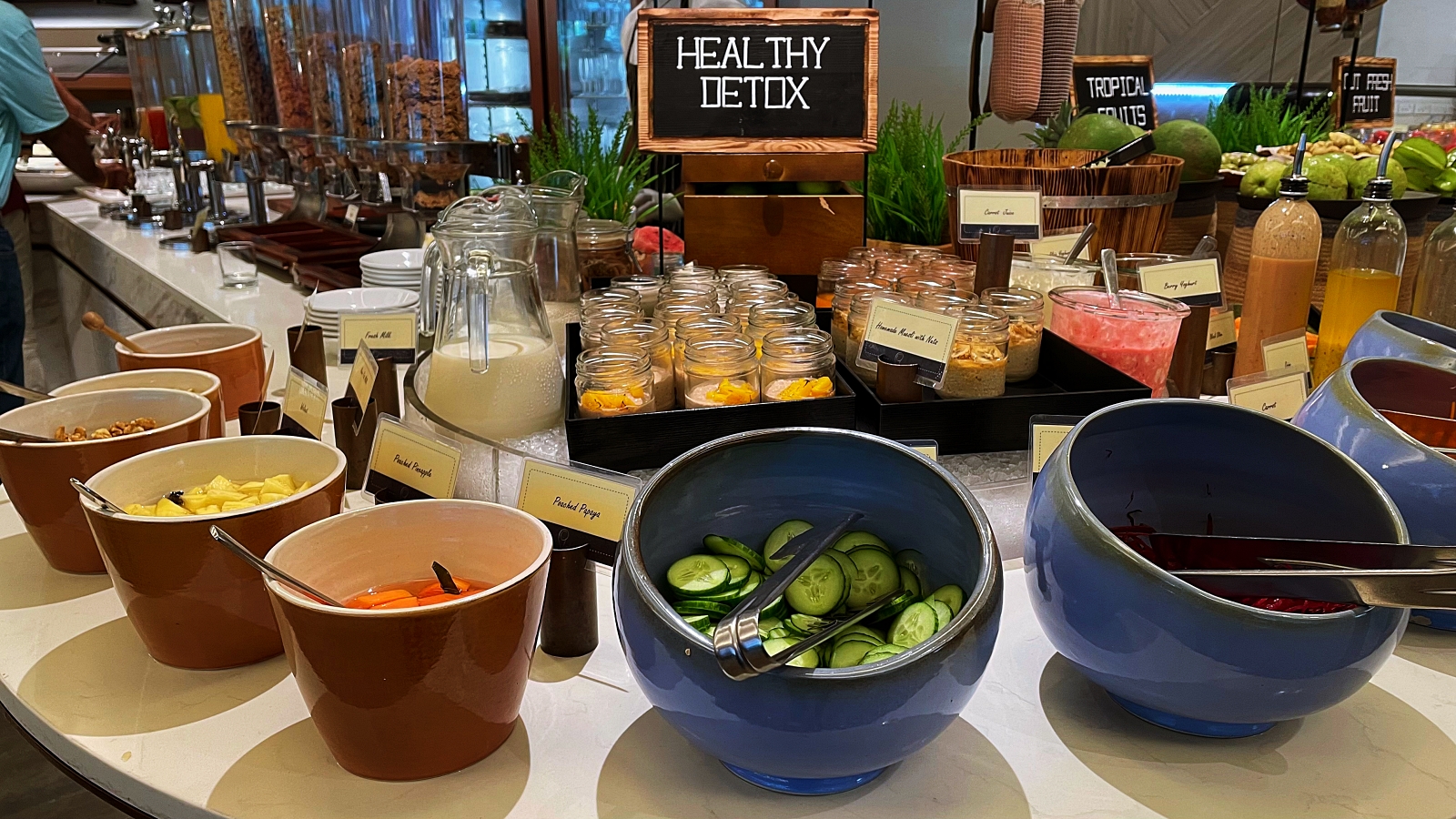Greenpeace Museum Of Memories
Greenpeace’s Museum Of Memories is an attempt at telling this story in full, a documentation of belongings, people, animals that were lost to the climate crisis, and whose memories should serve us as a reminder of the emergency we have at hand. Museum Of Memories is a display of 26 exhibits of everyday articles that tell a powerful, true story of people’s struggle while facing the climate crisis. These memories are here to remind us that we should demand accountability, from big polluters, governments, elected representatives, civil society and ourselves.
Table of Contents
Metallic Farming Basket
In 2006, Niranjan Kumar, from Jamui, Bihar, took on the responsibility of farming, handed down by his father. Reflecting on his earlier years, he recalls, “Initially, when we needed wells, we would manually dig 10-feet wells in our fields, constructing them ourselves. However, over time, environmental changes, increased heat, and reduced rainfall caused a decline in the water levels in our fields.” Presently, Niranjan emphasises that despite digging 300-feet borewells, the water yield remains insufficient. He anticipates a looming crisis in agriculture due to the ongoing disruptions in weather patterns, escalating temperatures, and fears that farmers might be compelled to resort to drastic measures such as suicide.
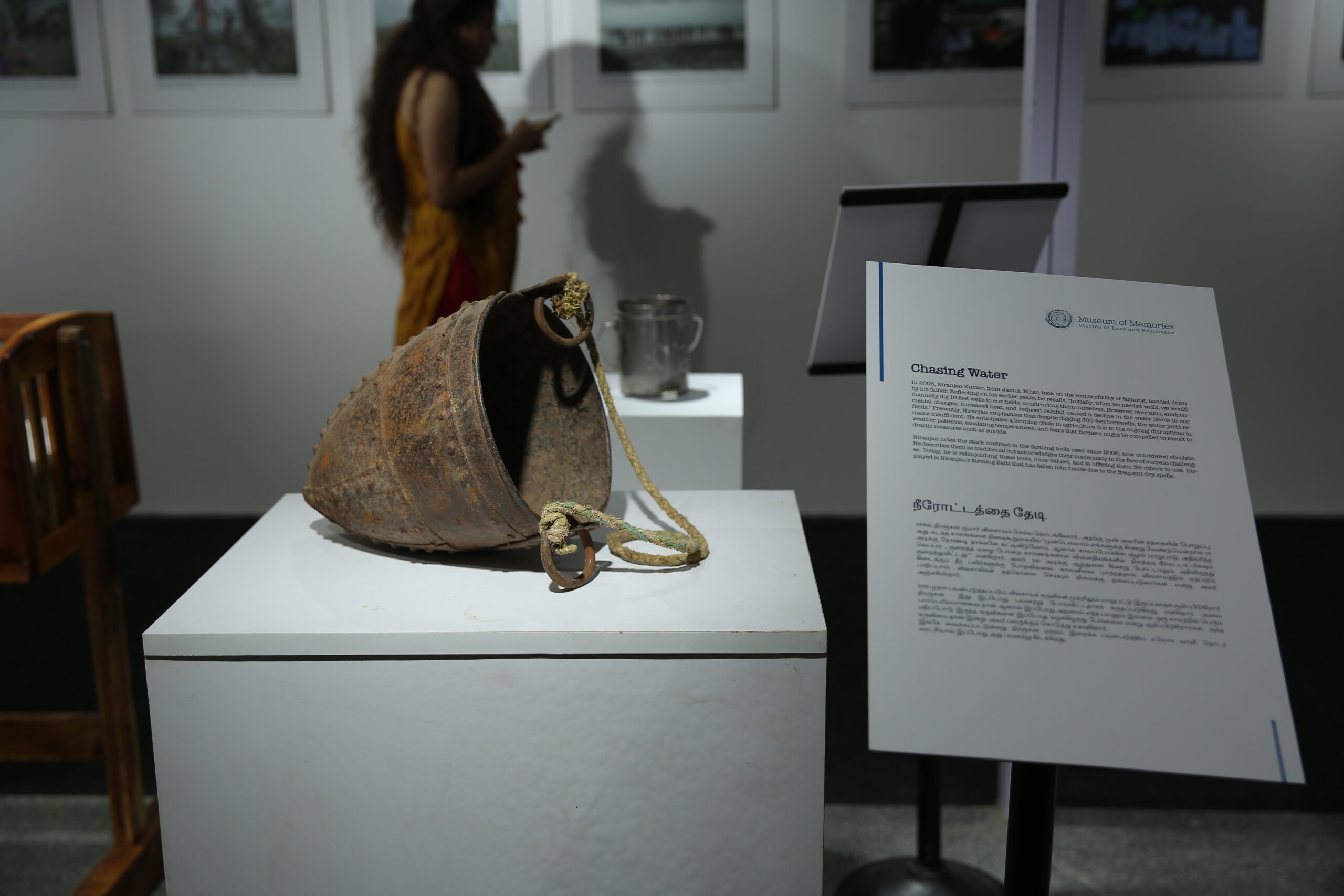
Niranjan notes the stark contrast in the farming tools used since 2006, now considered obsolete. He describes them as traditional but acknowledges their inadequacy in the face of current challenges. Today, he is relinquishing these tools, once valued, and is offering them for others to use.
Raj’s School Bag
In the aftermath of the destructive Cyclone Amphan which struck the coastal regions of the Sundarbans in 2020—soon after Cyclone Bulbul—widespread devastation unfolded. Countless homes were on the brink of collapse, and household belongings were mercilessly swept away by the cyclone’s fury. This poignant story revolves around Raj Gaazi, a young school student from Raidighi in the Sunderbans, who endured the brunt of the super cyclone. His cherished possessions, including books, pencils, an umbrella, and his beloved school bag, bore the scars of the calamity. The Gaazi family, hailing from an economically marginalised background, faced the harsh reality of losing essential household items, including Raj’s favourite school bag, books, and umbrella. The financial strain left them struggling to replace these cherished belongings, especially in a region where access to a library is nonexistent.
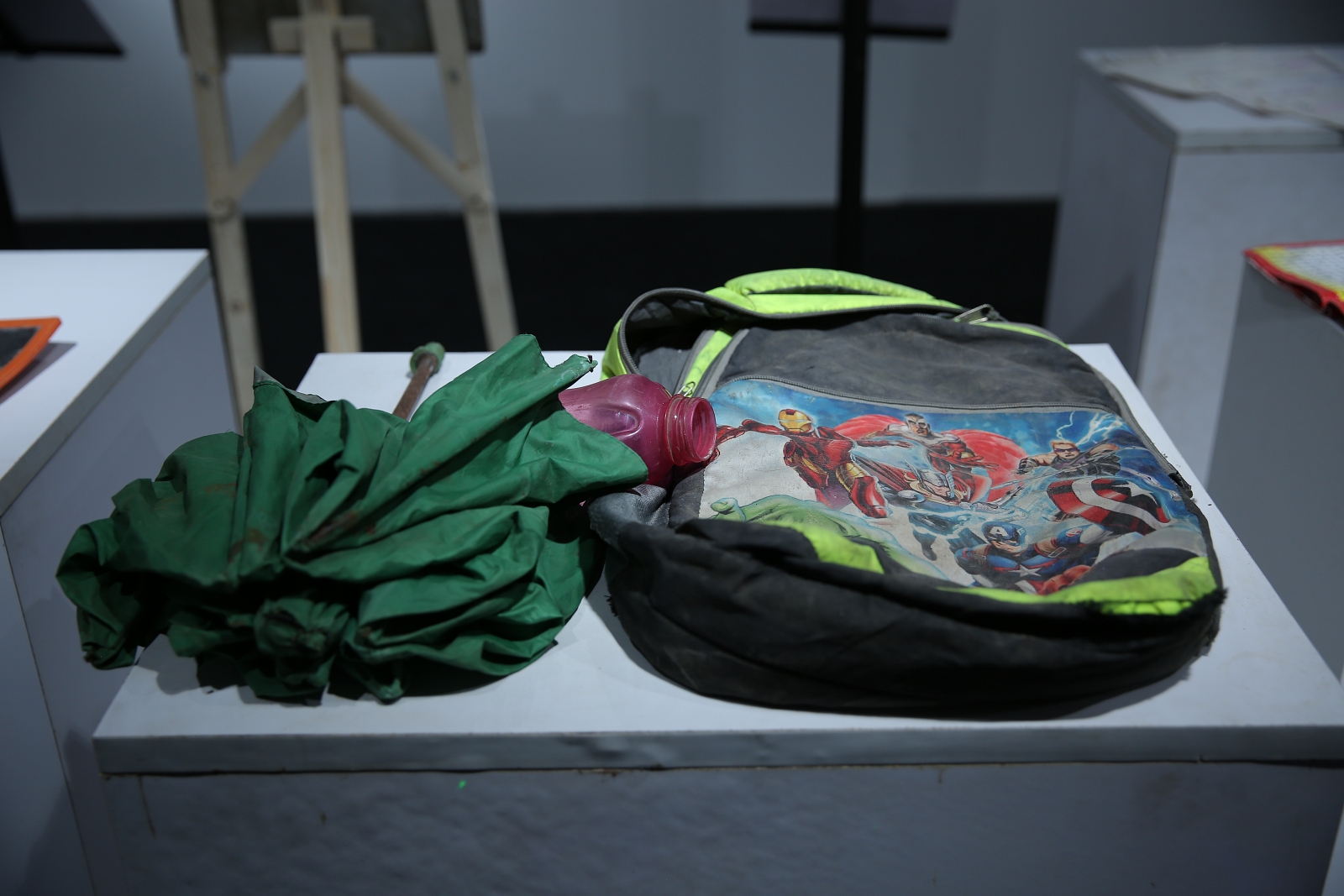
However, amidst the ruins, a ray of hope emerged for Raj and his family. The Sunderbans-based nonprofit socio-economic development organisation, MUKTI, stepped in to offer support. Through various livelihood and disaster response programmes, MUKTI extended a helping hand to assist the family in rebuilding their lives post-disaster. Raj, aided by this assistance, received a new set of books, allowing him to resume his education. This heartening tale underscores the resilience and community support that can emerge in the face of adversity, ensuring that young minds like Raj’s can rebuild their lives despite the devastation they’ve endured.
Photo of MGR
The displayed exhibit showcases a photograph capturing a light moment between former Tamil Nadu chief minister, actor, and philanthropist MG Ramachandran alongside his wife Janaki. This cherished photo was acquired from the Pallikkaranai, courtesy of 60-year-old O Vijayan. The emotional weight attached to this picture is profound, as Vijayan’s father had received it as a heartfelt gift. For 40 years, this photo had remained in impeccable condition, a precious possession that survived the test of time until the Michaung cyclone wreaked havoc in 2023. Vijayan, who has called his current home for 13 years, reflects on the unprecedented ferocity of last year’s storm, recounting how their house became completely submerged during two consecutive days of relentless rainfall. Heartbreakingly, this photograph, given to Vijayan’s father as a birthday present in 1984, suffered significant damage after being submerged for three days in the floodwaters.
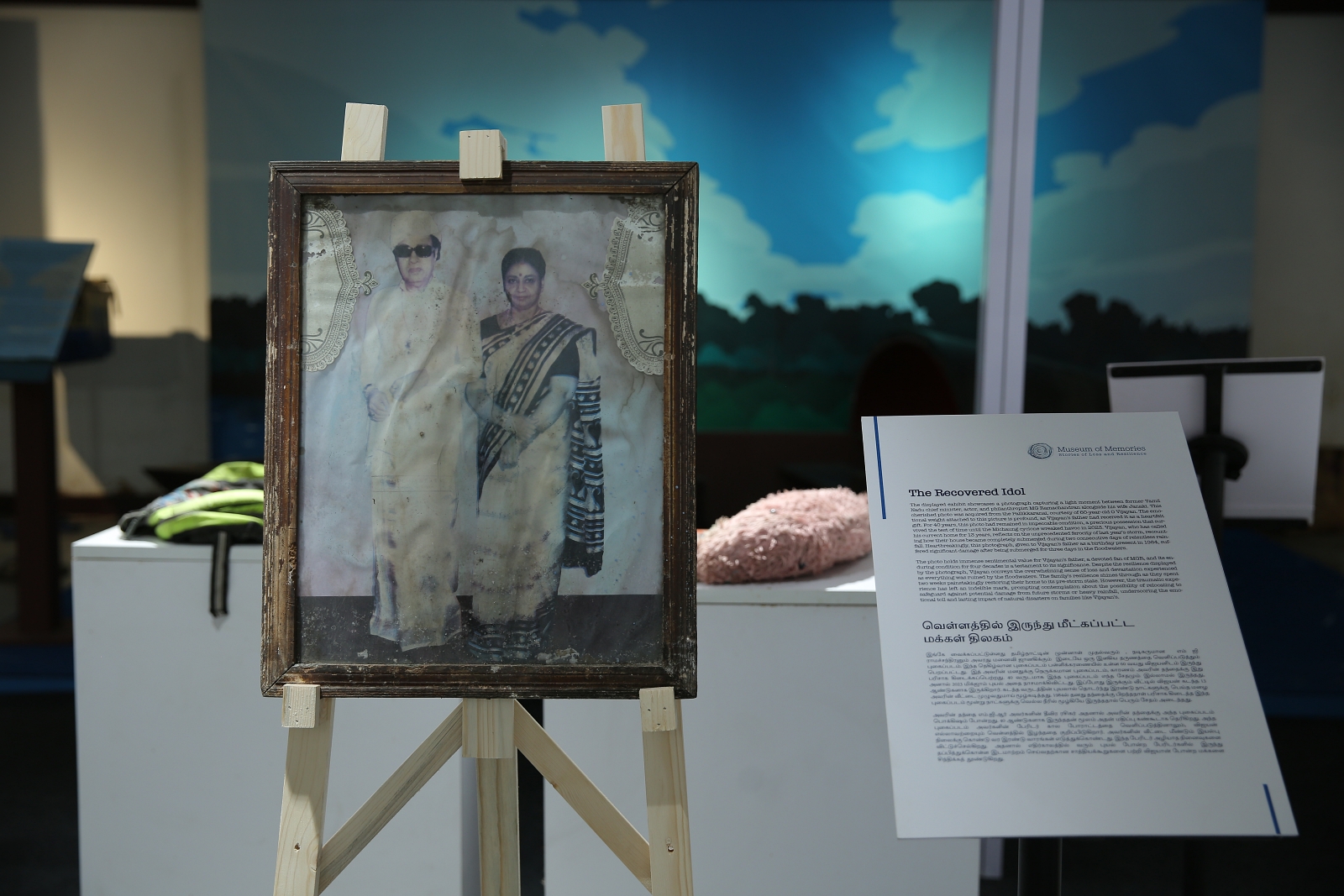
The photo holds immense sentimental value for Vijayan’s father, a devoted fan of MGR, and its enduring condition for four decades is a testament to its significance. Despite the resilience displayed by the photograph, Vijayan conveys the overwhelming sense of loss and devastation experienced as everything was ruined by the floodwaters. The family’s resilience shines through as they spent two weeks painstakingly restoring their home to its pre-storm state. However, the traumatic experience has left an indelible mark, prompting contemplation about the possibility of relocating to safeguard against potential damage from future storms or heavy rainfall, underscoring the emotional toll and lasting impact of natural disasters on families like Vijayan’s.
Rakiva’s Dolls
Rakiva, the two-year-old daughter of Silvi Alam, resident of Padham village in Munger district, Bihar, passed away due to a heat stroke while undergoing treatment. Rakiva’s mother, Zeenat, said that Rakiva was suffering from high fever and vomiting for two days. The girl was admitted to the paediatrician’s clinic located in Badi Bazaar. The treatment seemed to provide Ravika some relief and she was sent back home. However, after returning home, Rakiva’s condition deteriorated and she was referred to Sadar Hospital for treatment, where she passed away within two hours.
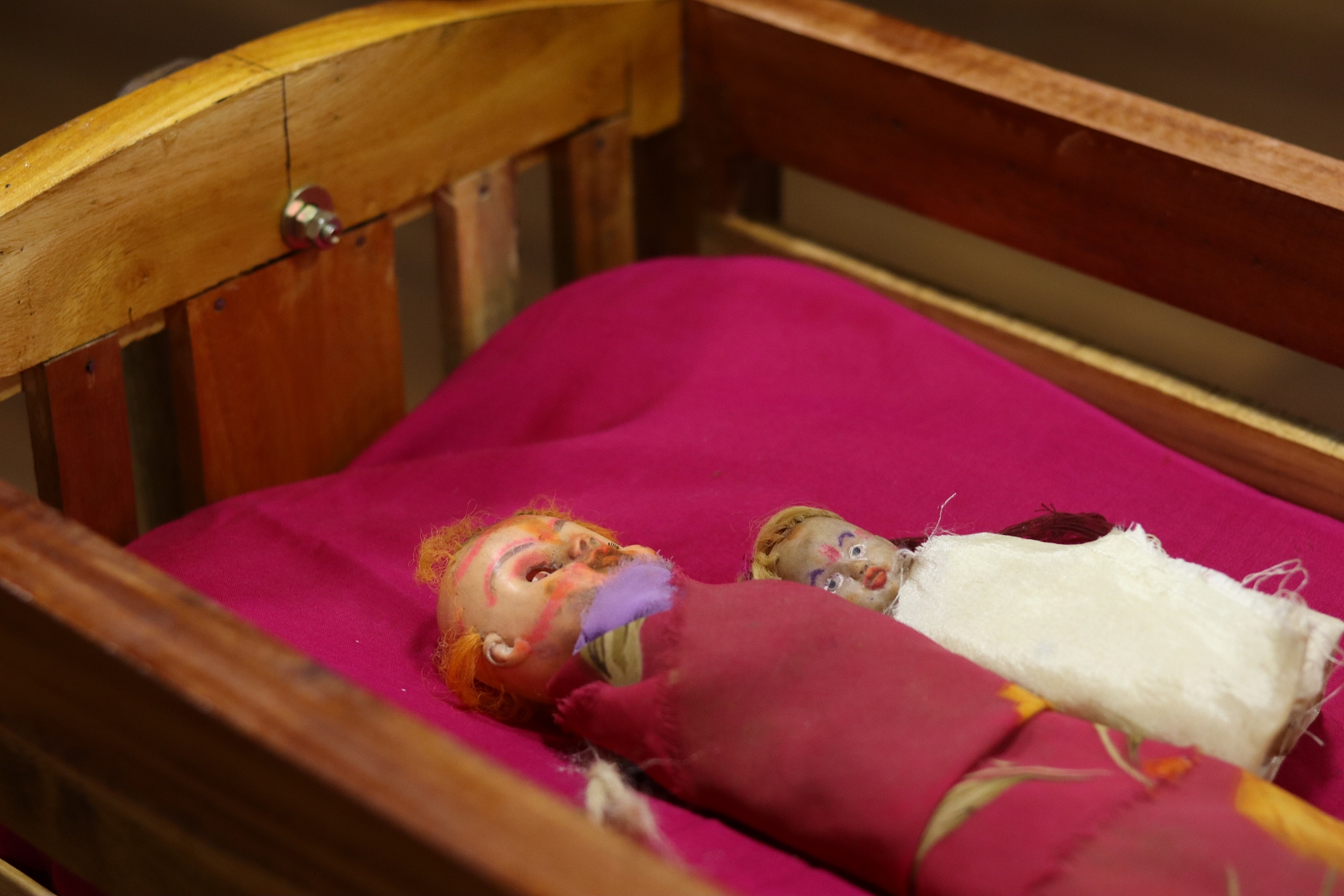
“Ravika was the only daughter in my family and we lost her during the heatwave. We loved Rakiva a lot. I miss her very much. She used to play with her dolls all day long, which I am giving you today.”
The Wall
Chellanam is a coastal village positioned 18km south of the Cochin Port, situated on a narrow stretch of land with the Arabian Sea to the west and Vembanad Lake to the east. The village is densely populated and heavily reliant on fishing. However, it faces the recurrent challenge of coastal erosion. In 2017, Chellanam experienced significant devastation as the sea wreaked havoc, damaging hundreds of houses, obstructing toilets and drainage systems, and contaminating open wells. The village, marked by the state government as highly susceptible to coastal erosion since 1986, accommodates more than 13,000 residents, with approximately 1,000 houses perilously close to the sea.
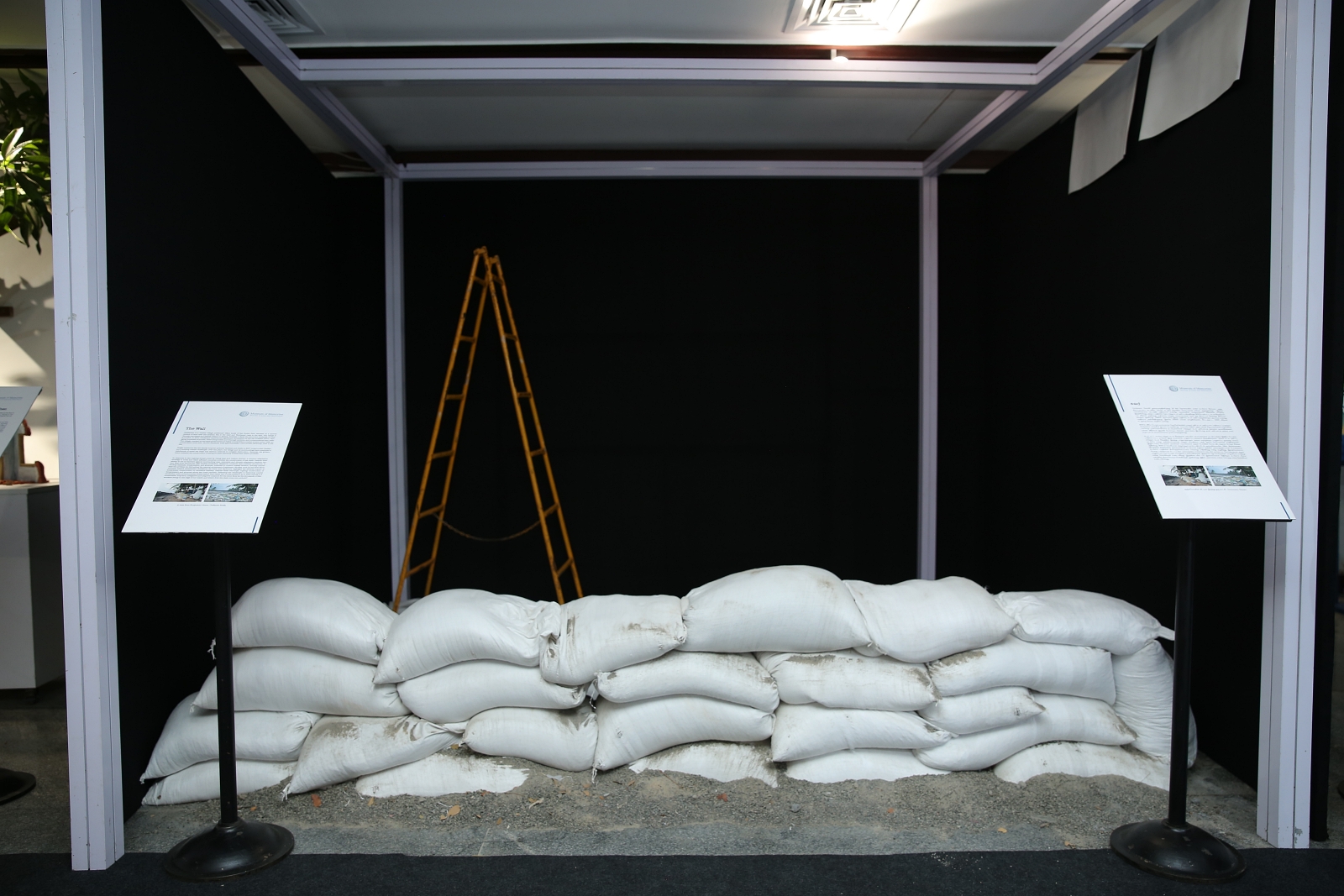
Tragic instances like the deadly tropical cyclones Tauktae and Ockhi in 2017 compounded Chellanam’s existing coastal challenges. Over the years, the village and its surroundings have employed a patchwork of small sea walls and various methods to mitigate destruction. Recently, the government initiated the construction of tetrapod walls following widespread citizen protests.
In response to the ongoing threat posed by rising seas and oceanic storms, a common adaptation strategy in India and other affected countries involves the construction of sea walls. Despite their ability to act as barriers against encroaching seas, scientists and climate adaptation experts caution that such structures offer limited protection. Research contends that artificial structures, including seawalls, breakwaters, and groynes, intended to control coastal erosion, actually exacerbate the problem by disrupting the natural movement of sediment.
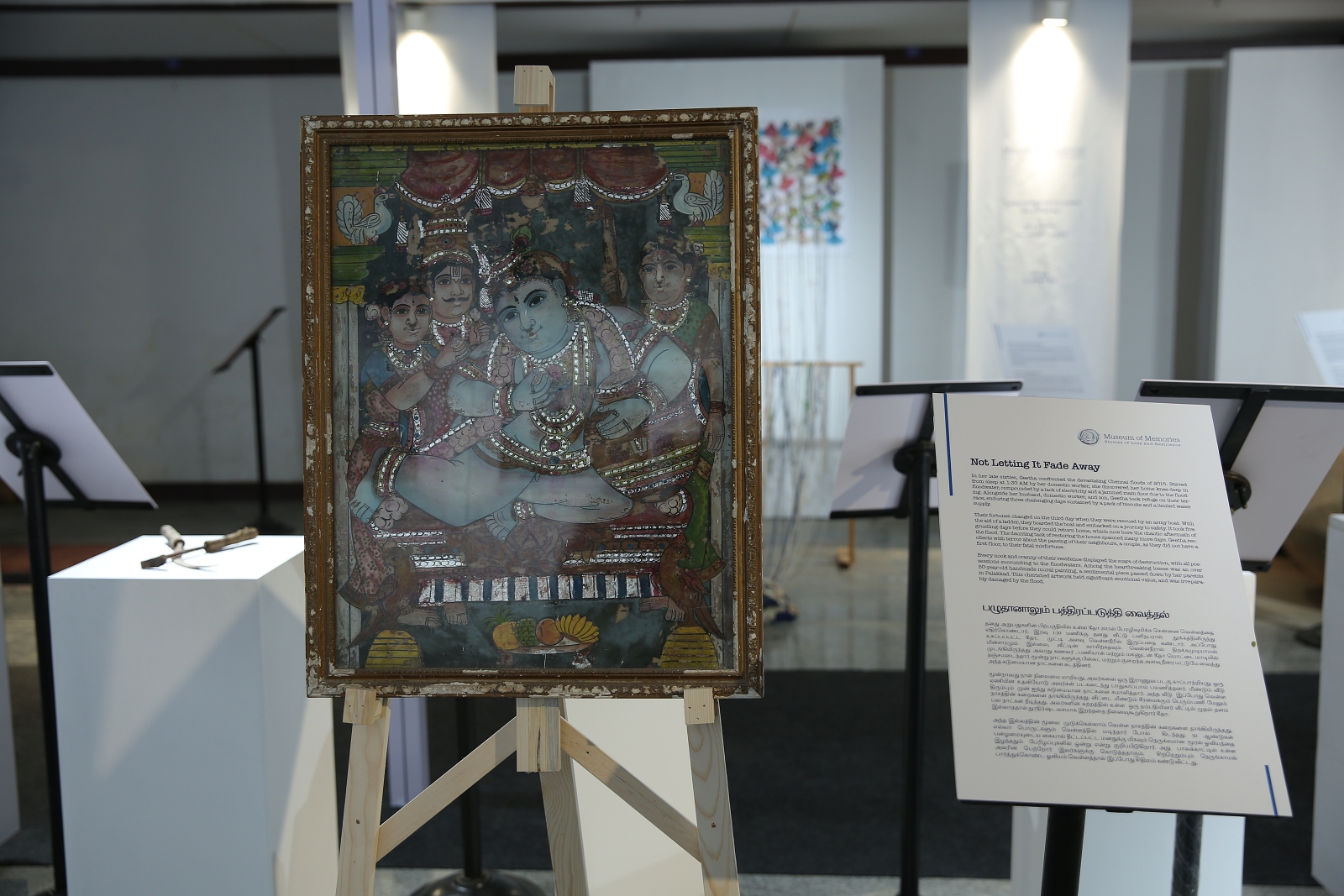
Studies, such as the 2010 Environment Impact Assessment Guidelines for Ports and Harbours, highlight the adverse impact of breakwater construction on shoreline stability. Despite these warnings, ongoing construction of breakwaters and groynes along the coast persists, reflecting the challenges in balancing coastal protection with environmental preservation.This raises the crucial question as to what exactly is a sustainable, long term mitigative and adaptive measure for the issue faces by the thousands of fishworkers living on the edge of our coasts and where does the state come into picture?
Part of a Hoe
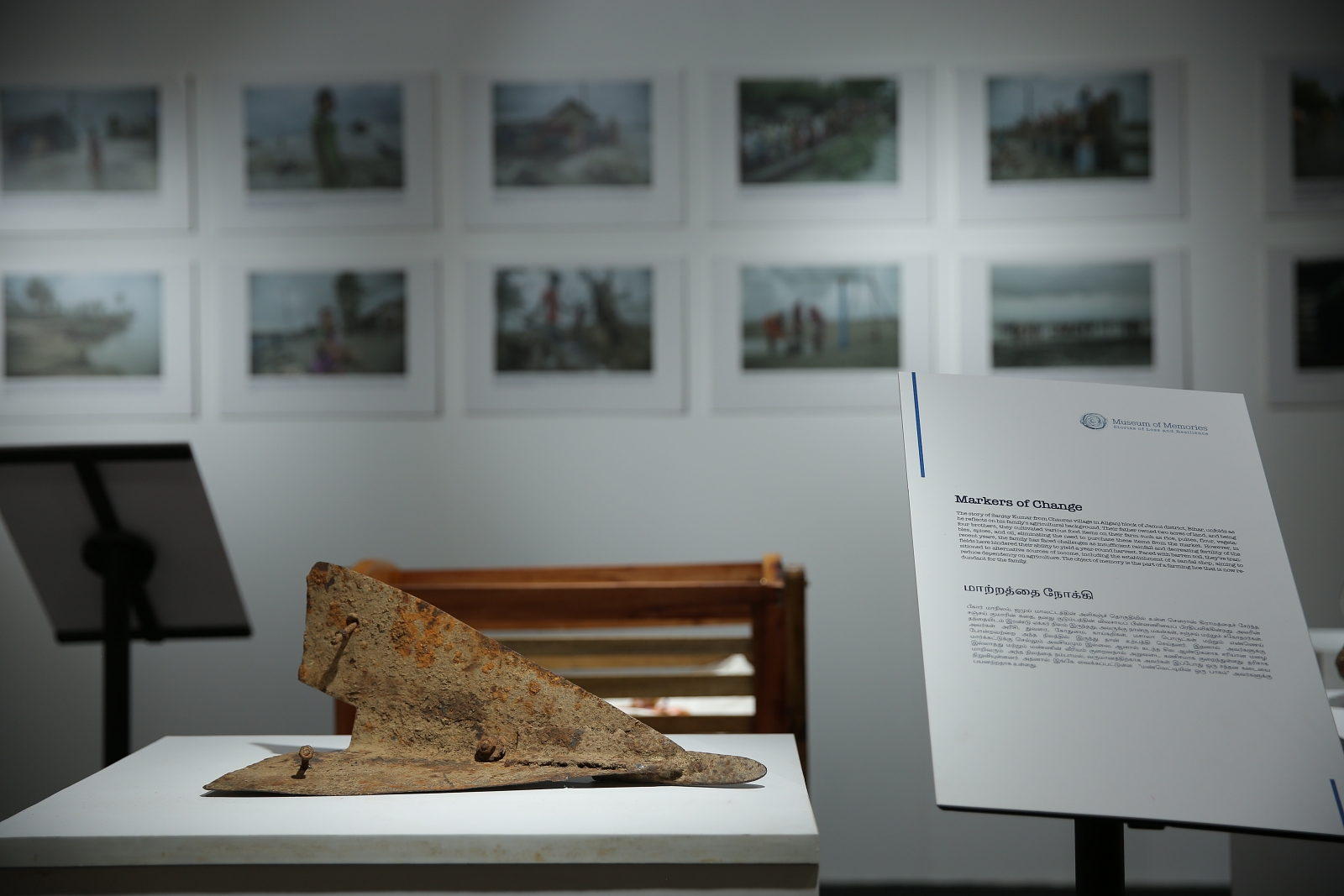
The story of Sanjay Kumar from Chauras village in Aliganj block of Jamui district, Bihar, unfolds as he reflects on his family’s agricultural background. Their father owned two acres of land, and being four brothers, they cultivated various food items on their farm such as rice, pulses, flour, vegetables, spices, and oil, eliminating the need to purchase these items from the market. However, in recent years, the family has faced challenges as insufficient rainfall and decreasing fertility of the fields have hindered their ability to yield a year-round harvest. Faced with barren soil, they’ve transitioned to alternative sources of income, including the establishment of a sandal shop, aiming to reduce dependency on agriculture.


